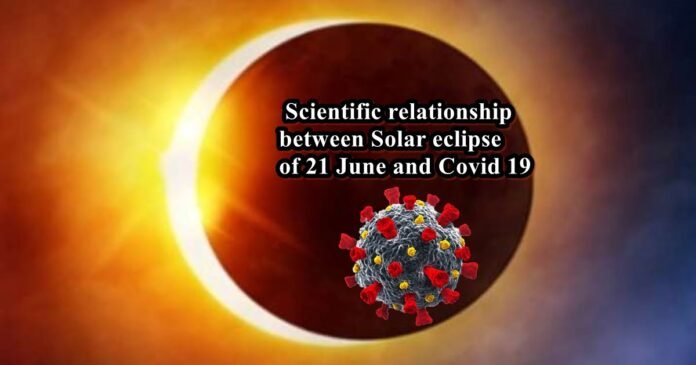
Hyderabad: Annular solar eclipse, the first visible eclipse of the decade, will occur on Sunday.
An annular eclipse occurs when the Sun and Moon are exactly in line, but the apparent size of the Moon is smaller than that of the Sun. Hence the Sun appears as a very bright ring, or annulus, surrounding the outline of the Moon, as per Planetary Society of India (PSI) Director N Sri Raghunandan Kumar.

He said though annular phase (popularly known as Ring of Fire) eclipse will only be visible in few places of Northern India, the rest of the country will observe it as partial solar eclipse.
The eclipse in various phases will occur between 9.16 am IST (3.46 am UTC) to 3.04 pm IST (9.34 am UTC), wherein Greatest Phase of Eclipse is at 12.10 pm IST (6.40 am UTC).
In India, depending on the location of a person from Central path, the eclipse, mostly in partial phases, will be visible between 9.56 am to 2.29 Mr Kumar said across the world, the eclipse can be seen in the region covering Africa (except Western and Southern parts), South East Europe, Middle East, Asia (except North and Eastern Russia), Indonesia etc.
Corona Virus and Solar eclipse
Here’s what a solar eclipse is: A solar eclipse takes place when the moon moves between the sun and earth, obstructing the sun’s light. In an annular solar eclipse, the moon entirely or partially covers the sun from when seen from earth.
So why does this have anything to do with the coronavirus?
In a bizarre claim, a scientist based in Chennai has said that there are connections between the coronavirus outbreak and the solar eclipse which took place on December 26.
Dr. KL Sundar Krishna, a Nuclear and Earth scientist told that the pandemic may have been a result of mutated particle interaction of the first neutron emitted after the solar eclipse owing to fission energy. He said that there is a “planetary configuration with new alignment in the solar system” which occurred after the solar eclipse. And that is even the coronavirus outbreak happened.
Krishna has even deduced a possible theory of how the virus originated. He told that the virus has come from the upper atmosphere where “inter-planetary force variation” took place. The said neutrons then began nucleating which further resulted in bio-nuclear interactions in the upper atmosphere. This bio-nuclear interaction, according to him, may be a source of the virus.
However, this may not be actually based in science. In fact, the only connection between coronavirus and the solar eclipse is just, well, the sun.
The current new novel Covid-19 belongs to the group of viruses called coronavirus. ‘Corona,’ means crown.
The scientists who came up with the term ‘coronavirus’ in 1986 found that under a microscope, the virus they were looking at resembled a solar corona: the bright crown-like ring of gasses surrounding the sun that is visible during a solar eclipse, reports TIME.
NASA also describes it similarly : “The Sun’s corona is the outermost part of the Sun’s atmosphere. The corona is usually hidden by the bright light of the Sun’s surface. That makes it difficult to see without using special instruments. However, the corona can be viewed during a total solar eclipse.”
There has also been a myth about how hot weather can kill coronavirus. While it’s a myth which has been debunked by the WHO, solar corona, could kill coronavirus – they’re really hot, in fact, they’re some hundred times hotter than the surface of the Sun.
But the only possible way for this solar corona to affect the coronavirus on earth, would be if they came in contact – which they won’t, since the sun is over 152.02 million kilometres.
Annular Solar Eclipse 2020: where can we see it
Partial Solar Eclipse 2020 or Surya Grahan 2020 will be spotted in most parts of Africa, the Middle East and Asia. However, 13 nations across the globe will be able to witness the “ring of fire” around the Sun, which will last only for a few seconds.
If you live in northern India, it will be possible to witness the rare “ring of fire” just for 38 seconds. Meanwhile, some of the other regions will be able to see Surya Grahan 2020 for around 82 seconds.
Solar Eclipse 2020 Dos and Don’ts
If you are planning to witness the Surya Grahan 2020 on coming Sunday, June 21, it is necessary to take care of a few points.
- To capture the eclipse, you might need a special solar filter on your lens.
- Looking directly at the sun for a long duration can damage your eyes. Wear proper eye protection or use a telescope.






































